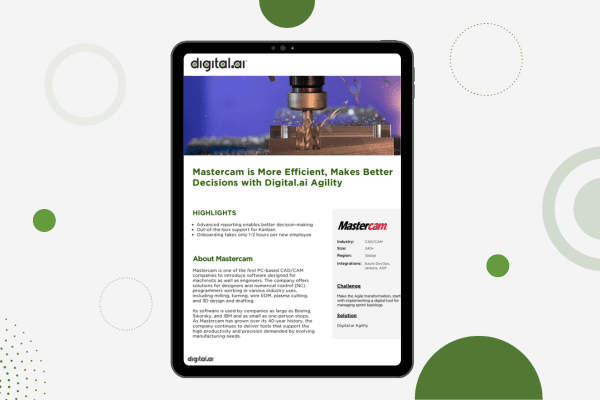Agile Project Management
Agile project management is a value-driven approach that allows project managers to deliver high-priority, high-quality work and look like rock stars to their stakeholders.
What is agile project management?
“But we do daily stand ups. We’re agile.”
Not so fast. Before you can say your team is agile, it’s important to have a good understanding of “what is agile?” and “what are some of the agile roles?” Agile project management is a value-driven approach that allows project managers to deliver high-priority, high-quality work and look like rock stars to their stakeholders. It’s nothing like the plodding, costly, and error-prone approach to project management, which has delivered inconsistent results for years.
Software projects change constantly. When customers are expected to finalize requirements before they can test-drive the prototypes, overhead and long delays often cripple the project. Agile project management is about embracing change, even late in the development stage. It’s about delivering the features with the greatest business value first, and having the real-time information to tightly manage cost, time, and scope.
Agile project management reduces complexity by breaking down the many-months-long cycle of building requirements for the whole project, building the entire product, and then testing to find hundreds of product flaws. Instead small, usable segments of the software product are specified, developed, and tested in manageable, two- to four-week cycles.
Have you heard about agile project management with scrum?
In traditional waterfall project management, the project manager is burdened with balancing project scope, cost, quality, personnel, reporting, risk, and adapting as requirements change. Agile project management divides these overwhelming responsibilities among three agile roles:
- The product owner handles setting project goals, handling the tradeoff of schedule versus scope, adapting to changing project requirements, and setting priorities for product features.
- The scrum master guides the team to prioritize their tasks and removes impediments to handling their tasks. Agile project management with scrum is an entirely new world!
- The team members directly handle most of the task assignment, daily detail management, progress reporting, and quality control for the product.
Why should I care about agile project management?
If you’ve already started implementing agile with your team and it seems overly complicated, you may be missing one major component: inspect and adapt. If you’re doing agile the right way, your product delivery process should just keep getting better and better, improving your team’s value to stakeholders and your personal value to the company.
Agile project management continuously evaluates time and cost as primary constraints. Rapid feedback, continuous adaptation, and QA best practices are built in to the team’s committed schedules, ensuring top-quality output and proven processes. Agile project managers look at proactive, real-time delivery metrics such as velocity, burndown, and cumulative flow versus frequently out-of-date Gantt Charts, spreadsheets and irrelevant or impossible project milestones. The net result? You have fewer costly end-of-project surprises, and the working product is delivered in weeks rather than months.
Scaling agile methodologies across teams and projects
The mistake some teams make is they have success with one agile team and then add more projects and teams without preparing for the growth. Before they know it, they have a hodgepodge of teams using their own modular agile tools to manage their work. These tools do not speak the same language or roll up to a clear software portfolio vision.
If you’ve already encountered this, you know scaling agile is not easy. But there are ways to make it easier. One of the critical job functions of a project manager is to meet project objectives while creating a consistent formula for least-cost, best-ROI processes. Agile project management with scrum tools makes this easy and repeatable for multiple projects and teams, even when they are in different physical locations. By centrally managing all requirements, requests, tasks, tests, and defects into a real-time tool, agile project managers can streamline cross-team collaboration and decision making while eliminating waste and giving executives and auditors the numbers they need. Exactly when they need them.
Is agile project management right for you?
Not sure how to get started? Or you’ve already begun but not sure you’re doing it right? Let’s talk. Take a small step toward big value; have a no-pressure conversation with one of our coaches. You’ll learn how to get started with agile project management to create high-impact development teams with minimal business disruption.




